How to Remove Linseed Oil From Concrete
Concrete is a popular surface for many homes and businesses. While it is durable and easy to clean, there are some instances when you may need to remove linseed oil from concrete. Linseed oil is used as a sealant for concrete, but it can be difficult to remove if too much is applied.
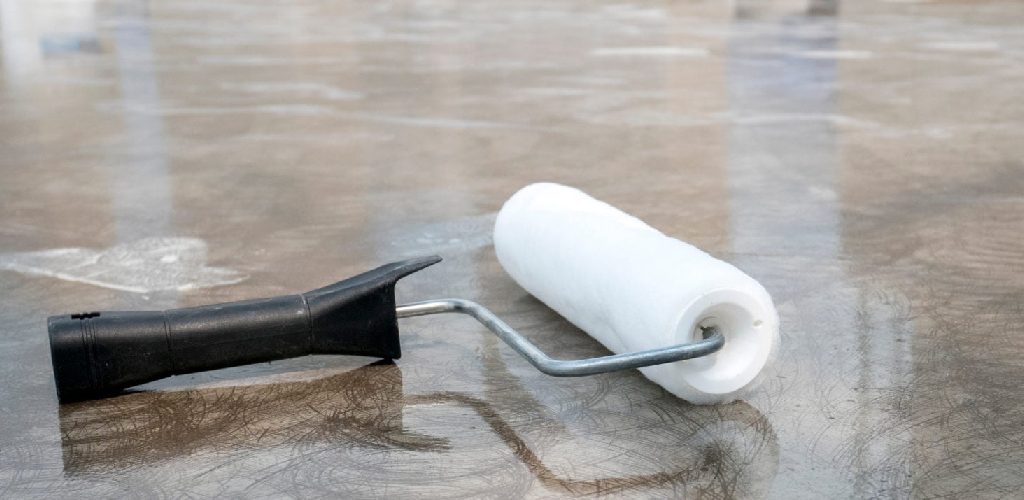
Removing linseed oil from concrete can be a difficult process. However, it can be done effectively with the right steps and tools. In this blog post, we will walk you through how to remove linseed oil from concrete and offer some tips to make the job easier. Let’s get started!
What is Linseed Oil?
Linseed oil is a natural oil that comes from flax seeds. It is commonly used as a sealant for concrete surfaces, as it helps to protect and preserve the surface. When linseed oil is applied to concrete, it creates a protective barrier against water, stains, and other elements. However, if too much linseed oil is applied or if it is not properly applied, it can create a sticky and unpleasant mess on the concrete surface. This is when it becomes necessary to remove the linseed oil from the concrete.
Why is it Important to Remove Linseed Oil from Concrete?
If left unattended, linseed oil can discolor and damage the concrete surface. This not only affects the appearance of the area but it can also compromise the integrity of the concrete itself. Additionally, linseed oil can become slippery when wet, creating a safety hazard for anyone walking on or near the affected area.
You may also need to remove linseed oil from concrete in order to properly reapply it. If the old linseed oil is not removed, the new coat cannot properly adhere to the surface.
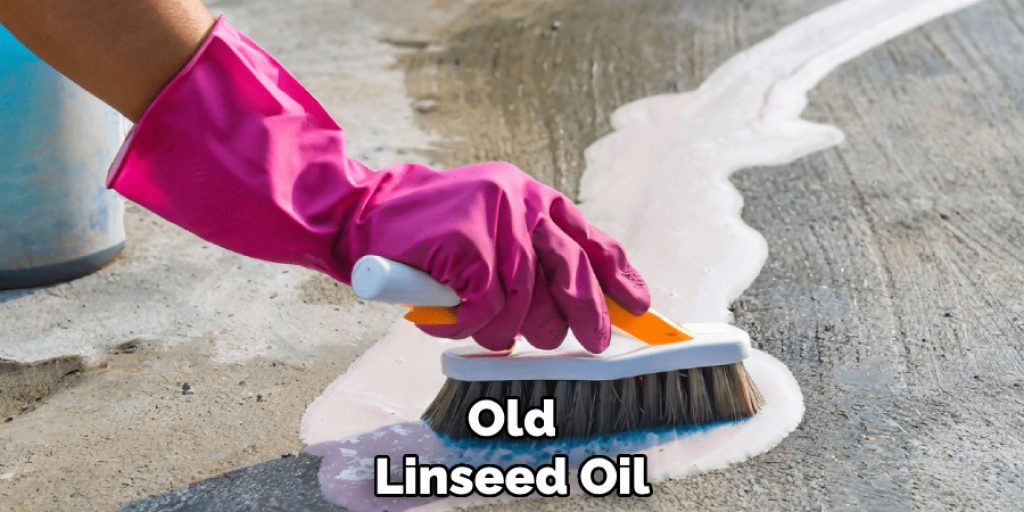
Needed Materials:
Plastic Scraper or Putty Knife:
To remove the bulk of the linseed oil from the concrete surface.
Absorbent Materials:
Such as cat litter, sawdust, or cornstarch to soak up any remaining oil.
Cleaning Solution:
A mild detergent or degreaser, water, and a scrub brush to clean the concrete surface after removing the linseed oil.
Pressure Washer:
For more stubborn stains or larger areas, a pressure washer can be used to effectively remove the linseed oil.
10 Effective Ways How to Remove Linseed Oil From Concrete
1. Use a Waterless Concrete Cleaner:
Use a waterless concrete cleaner that will dissolve or encapsulate the linseed oil. These products are usually citrus-based and work by breaking down oils like linseed oil into smaller pieces that can be absorbed easily into the existing flooring materials. Then, simply wipe it up after use.
You can find these types of cleaners at your local hardware store or online. Be sure to read the instructions carefully before using and test a small area first.
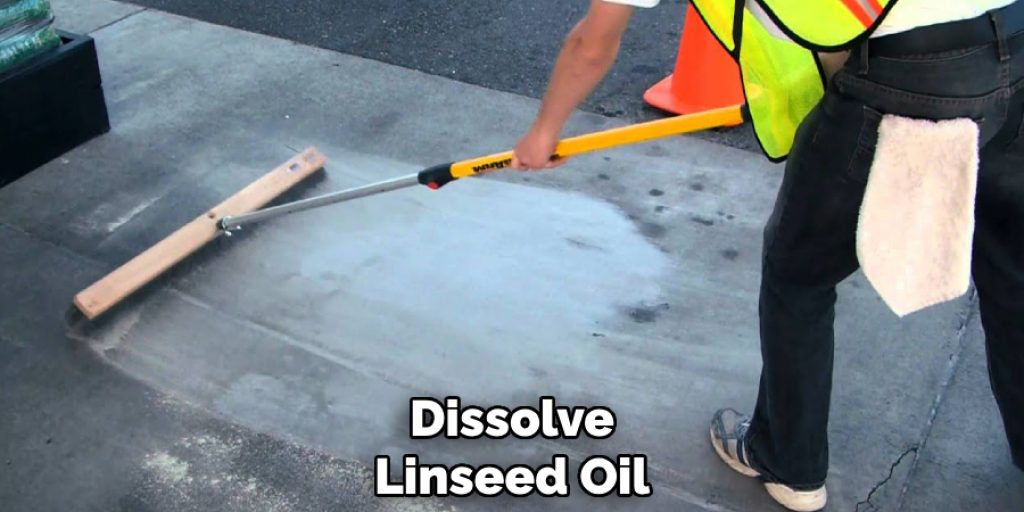
2. Use Mineral Spirits:
Blot up as much linseed oil as possible with rags or paper towels. Next, pour some mineral spirits onto the spot and allow it to soak for an hour or two. Then, you’ll need to wipe up the mineral spirits and any other residue. You may need to repeat this process multiple times for larger or more stubborn stains.
It is important to note that mineral spirits can be toxic, so make sure the area is well-ventilated and wear protective gear while using it. But, it is an effective way to remove linseed oil from concrete. You can find mineral spirits at most home improvement stores.
3. Use Paint Thinner:
Pour paint thinner onto the linseed oil stain, just enough so that it covers the area generously. Allow it to penetrate into the concrete for about half an hour and then sprinkle some baking soda onto the paint thinner. Finally, scrub the paint thinner, linseed oil, and baking soda mixture with a brush. Rinse with water and let it dry.
You can buy paint thinner at most hardware stores and make sure to wear protective gear while using it. The baking soda in this method helps to absorb the oil and make it easier to remove.
4. Use Acetone:
After collecting as much of the linseed oil spill as possible with paper towels, cover the stain with acetone nail polish remover. Allow it to soak into the concrete for an hour or two, then scrape off with a plastic putty knife. Wipe up any remaining stain with acetone nail polish remover and repeat if necessary.
It is important to test this method on a small, inconspicuous area first as acetone can discolor some types of concrete. Additionally, it is highly flammable and should be used with caution.
5. Use Paint Stripper:
Paint strippers are designed to dissolve oil-based paints, but they can also be used to remove linseed oil. Apply the paint stripper to a stained area with a brush, wire brush, or roller. Allow it to sit on the concrete for an hour before scraping off any residue with a plastic putty knife.
You can find paint strippers at most home improvement stores, and make sure to read the instructions carefully before using. But, this method is effective for removing linseed oil from concrete surfaces.
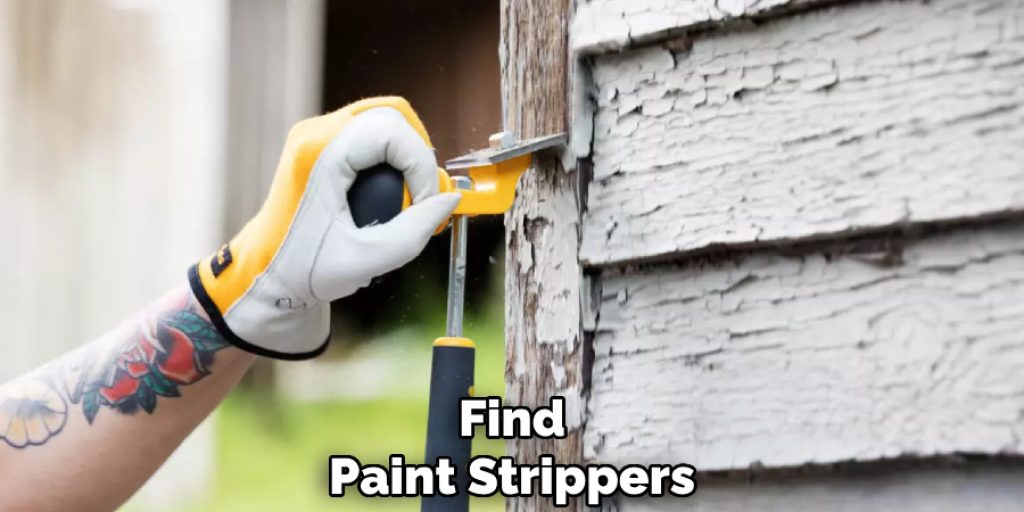
6. Use Bug & Tar Remover:
Bug and tar removers are formulated to cut through oil, grease, and tar, making them effective at removing linseed oil. Apply bug and tar remover with a brush or roller, then allow it to sit for an hour before wiping away any residue with a wet rag. Repeat if necessary.
You can find bug and tar removers at most automotive or home improvement stores. It is important to test this method on a small area first as it may discolor some types of concrete.
7. Use TSP:
TSP is a degreasing agent that can help dissolve linseed oil when applied with water to a stained concrete area. Mix together one part TSP with three parts water, then allow it to soak into the stain for an hour or two before scrubbing it away with a stiff brush and rinsing it thoroughly with clean water.
You can find TSP at most home improvement stores, and make sure to wear protective gear while using it. It is also important to test this method on a small area first as it can discolor some types of concrete.
8. Use Acetone & Mineral Spirits:
Pour equal parts acetone and mineral spirits onto the linseed oil stain, let it soak into the concrete for an hour or two, then scrub the area with a stiff brush. Finish by wiping up any remaining stain with a clean rag soaked in mineral spirits.
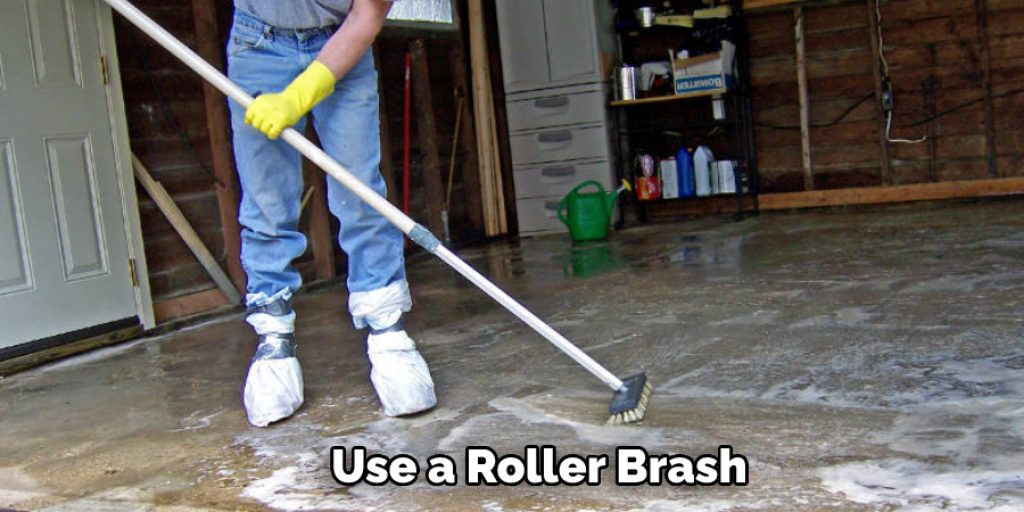
It is important to test this method on a small area first as acetone can discolor some types of concrete. Also, make sure to wear protective gear while using these chemicals. You can find mineral spirits at most home improvement stores.
9. Use Muriatic Acid:
Muriatic acid is diluted hydrochloric acid found at most hardware stores and home improvement centers. It can be used to remove linseed oil from concrete but should be applied with a spray bottle. Fill the spray bottle with muriatic acid, then spray it onto the stain. Let it set for a few minutes before wiping away the residue with a clean rag. Rinse the area thoroughly after using muriatic acid.
It is important to test this method on a small, inconspicuous area first as muriatic acid can discolor or damage some types of concrete. Additionally, it is highly corrosive and should be used with caution. Wear protective gear and work in a well-ventilated area.
10. Remove Linseed Oil With WD-40:
WD-40 is a degreasing agent that can break down linseed oil. Spray WD-40 onto the stained concrete, let it penetrate for a few minutes, then wipe up any residue with a clean rag. The first thing to do is to try and remove as much of the linseed oil as possible using paper towels or rags. Once you’ve done that, pour some mineral spirits onto the spot and allow it to soak for an hour or two. Then, you’ll need to wipe up the mineral spirits and any other residue.
Following that, try using paint thinner in the same way – pour it onto the stain, allow it to sit for half an hour then sprinkle baking soda on top. Scrub everything with a brush and rinse with water.
If these methods don’t work, you can also try using acetone or muriatic acid. Just remember to test them out on a small area first and use them with caution. With patience and the right techniques, you can remove linseed oil from your concrete surfaces and restore their appearance. Try out different methods until you find the on
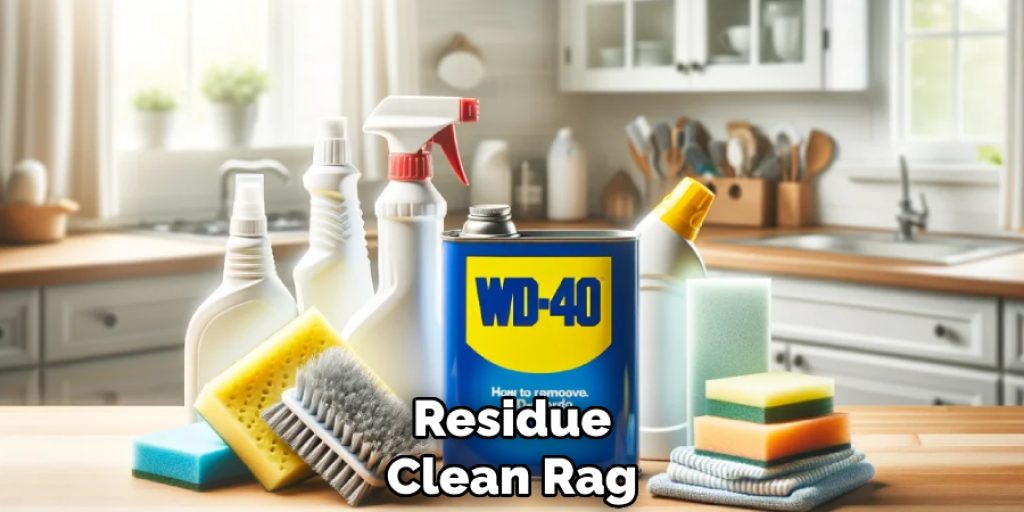
Some Helpful Tips and Suggestions:
1. Always wear gloves while handling linseed oil, any type of rags, or towels used with the oil.
2. Use a high-pH soap like Dawn dish soap or one designated for use on oily substances.
3. Make sure you get the oil off of your skin by using warm water and soap right away; if any gets on you, wash it off quickly with soap and clean, warm water.
4. If the oil has already seeped into the concrete, you may need to use a chemical degreaser or other heavy-duty cleaners to get rid of it.
5. Try using full-strength vinegar on the fresh oil spill, wait for about 20 minutes and then rinse with water. Try applying baking soda to the area and scrubbing it with a stiff scrub brush if this doesn’t work.
6. If none of these work, you may need to try using an oxygen-based concrete cleaner specifically designed for use on oil stains.
Types of Oils that Stain Concrete:
1. Gasoline:
Gasoline is a common oil that will stain concrete. It can be removed usually with solvent or degreaser. The best way to remove gasoline from concrete is to blot the stain with a solvent or degreaser. If these can not be found readily on-site, you can use diluted dish soap and water to blot the stain.
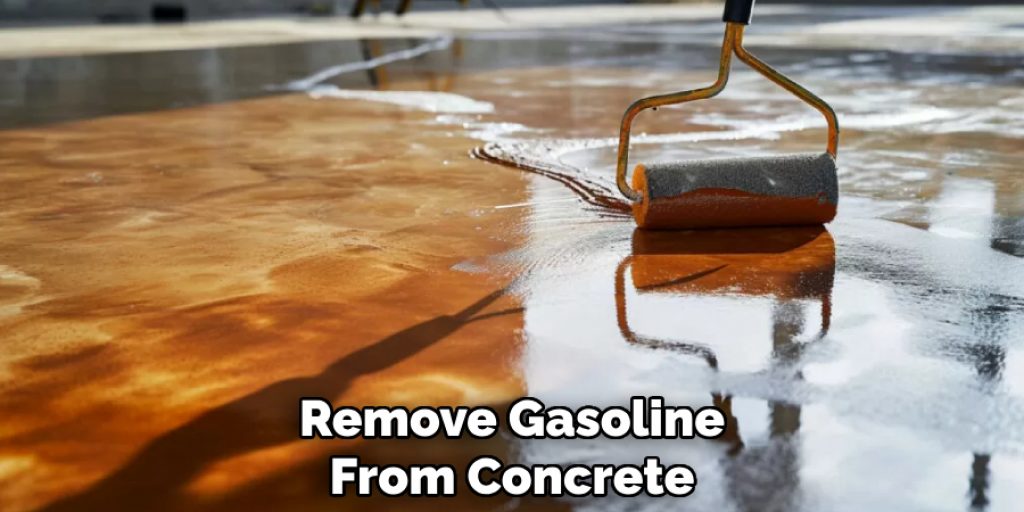
2. Transmission Fluid:
Transmission fluid is another common oil stain found on concrete. Transmission fluid should be blotted with a solvent or degreaser as it can cause irreversible damage if washed into your concrete.
3. Motor Oil:
Motor oil is a very common oil that will eventually stain concrete. It, too, should be blotted with a solvent or degreaser as it can cause irreversible damage if washed into the concrete.
4. Solvents:
Solvents are another common oil that will stain concrete. Solvents can usually be removed by blotting with a solvent or degreaser. If that does not work, then you can use a solvent designed specifically for removing oil stains from concrete.
5. Grease:
Grease is another common oil that will stain concrete. To remove grease, blot with a solvent or degreaser and then rinse the area with water to get rid of any remaining residue. You may need to repeat this process several times to remove the stain fully.
6. Cooking Oil:
Cooking oil is another type of oil that can stain concrete. To remove cooking oil, blot with a solvent or degreaser and then rinse with water. You may need to scrub the area with a stiff brush to remove the stain fully.
Preventing Oil Stains on Concrete:
To prevent oil stains on concrete, it is important to clean up any spills immediately. This will prevent the oil from seeping into the concrete and causing a stain. Additionally, consider using an absorbent material such as cat litter or sawdust to soak up the oil before wiping it away.
Another preventative measure is to seal your concrete surfaces regularly. This will create a barrier between the oil and the concrete, making it easier to clean up spills. Choose a high-quality sealer designed for use on concrete surfaces. Follow the manufacturer’s instructions for application and reapplication.
Frequently Asked Questions:
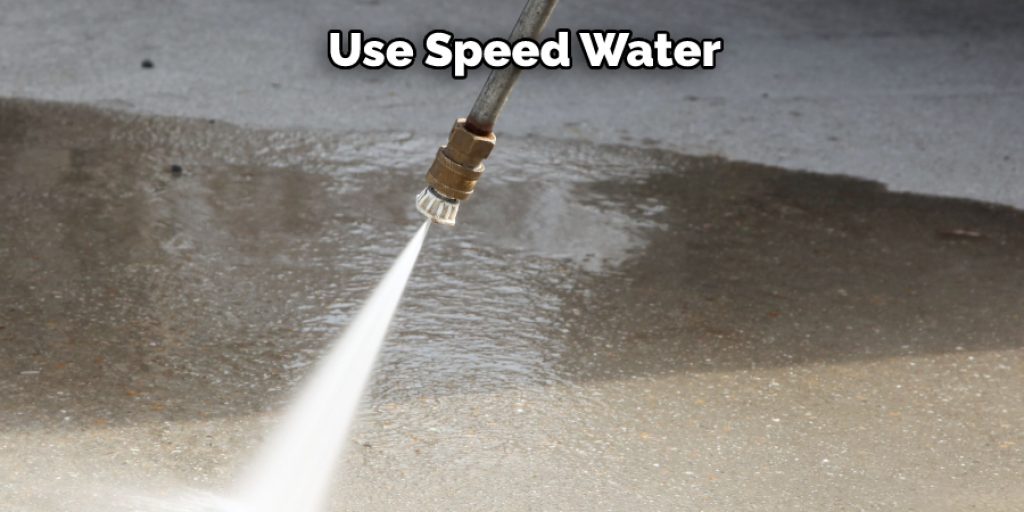
Q: Can Linseed Oil Be Removed From Concrete?
A: Yes, linseed oil can be removed from concrete using various methods such as dish soap, mineral spirits, paint thinner, acetone, or muriatic acid. You may need to try different techniques to find one that works for your specific stain. It is important to test these methods on a small, inconspicuous area first and use caution when working with strong chemicals. You can also prevent linseed oil stains by cleaning up spills immediately and regularly sealing your concrete surfaces.
Q: Can I Use Bleach On Concrete To Remove Oil Stains?
A: No, bleach is not effective in removing oil stains from concrete. In fact, it can make the stain worse by spreading it and causing discoloration. It is best to use solvents or degreasers specifically designed for oil stain removal on concrete surfaces. You can also try natural methods such as vinegar or baking soda, but these may not be as effective. The key is to act quickly and blot the stain before it has a chance to set in.
Q: How Do I Know When The Oil Stain Is Fully Removed?
A: It can be difficult to determine when an oil stain is fully removed from concrete, especially if it has already seeped into the surface. However, a good indicator is the absence of any residual discoloration or texture on the concrete. You can also try pouring water onto the area and seeing if it beads up or soaks in. If the water soaks in, it may indicate that some oil residue is still present. In this case, you may need to repeat the cleaning process or use a more heavy-duty cleaner.
Q: Can I Use Pressure Washing To Remove Oil Stains On Concrete?
A: Pressure washing can be effective in removing oil stains on concrete, but it is important to use caution and the correct settings. Using too much pressure or a high temperature can damage the concrete surface. It is best to start with a low-pressure setting and gradually increase if needed. You may also want to try using a hot water pressure washer, as the heat can help break down the oil and make it easier to remove. Always test a small area first before pressure washing the entire stained surface. Additionally, it may be necessary to use solvents or degreasers in conjunction with pressure washing for more stubborn stains.
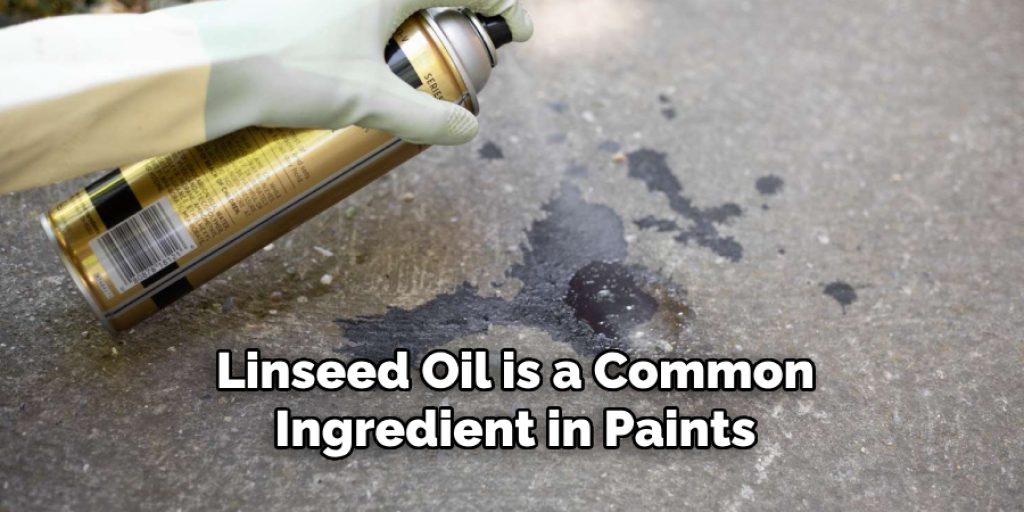
Conclusion:
Linseed oil is a common ingredient in paints and varnishes, but it can also be used as an effective sealant for concrete. This type of sealant will protect the concrete from water damage by sealing up any cracks or pores that could cause moisture to seep into the surface. However, the linseed oil needs to be applied before painting or staining with another product because these products are not compatible with oils like linseed.
To remove the residual linseed oil on your concrete surfaces, once you’ve finished applying it, use one part bleach mixed with nine parts water to liberally apply over all stained areas. Rinse thoroughly afterward so no bleach residue remains behind! We hope this blog post on how to remove linseed oil from concrete has been helpful. If you have any questions or want to know more, feel free to comment below!




